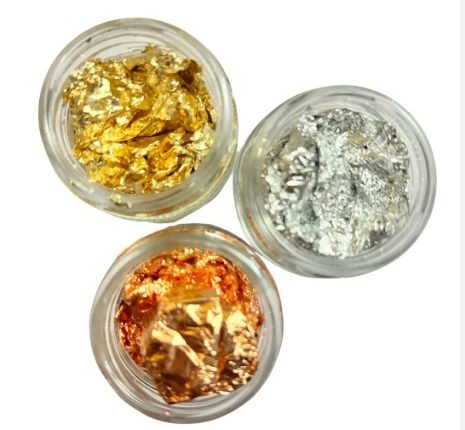Gold and Silver Foils: More Than Just Decoration in Indian Sweets
From Mughal feasts to modern celebrations, India’s tradition of adorning sweets with gold and silver vark reflects a blend of luxury, spirituality, and Ayurvedic wisdom that continues to sparkle through generations.
A Heritage of Shine and Splendor
In India, the shimmering gold and silver foil—known as vark—that decorates sweets such as kaju katli, barfi, and laddus is more than just an embellishment. These delicate metallic sheets, layered over traditional desserts, reflect a centuries-old cultural practice that intertwines luxury, spirituality, and health.
Historical Roots in Royal Feasts
The use of edible gold and silver in food dates back to the Mughal era, when emperors adorned their royal feasts with precious metals to symbolize wealth and grandeur. Over time, this royal indulgence became part of everyday celebrations, with common people adopting it to express joy and festivity. What began as a sign of imperial opulence evolved into a cultural tradition across India.
Ayurvedic Significance of Precious Metals
According to Ayurveda, gold and silver possess healing properties that go beyond aesthetic appeal. Gold was traditionally believed to enhance vitality and immunity, while silver was regarded as cooling and antimicrobial. These beliefs led to their inclusion in medicinal preparations and festive foods, promoting both well-being and prosperity.
Religious and Cultural Symbolism
The use of gold and silver vark carries deep spiritual meaning in Hindu culture. Sweets covered with these metals are often offered to deities during religious ceremonies and festivals, symbolizing purity, devotion, and abundance. The glittering foil is seen as an offering of light, representing divine blessings and prosperity for the devotees.
Craftsmanship and Modern Adaptations
Traditionally, artisans in cities like Jaipur and Hyderabad painstakingly hammered thin sheets of pure gold and silver between layers of leather to produce the ultra-fine vark. Modern manufacturing has moved towards hygienic, machine-made production, ensuring purity and safety while preserving the centuries-old craftsmanship and charm.
A Tradition That Shines Through Generations
From royal kitchens to festive homes, vark continues to symbolize elegance and celebration in Indian culture. Whether during weddings, Diwali, or family gatherings, the glimmering layer atop sweets connects generations, embodying India’s enduring heritage where food is not just nourishment—it is a sacred expression of joy, devotion, and culture.



Comments are closed.